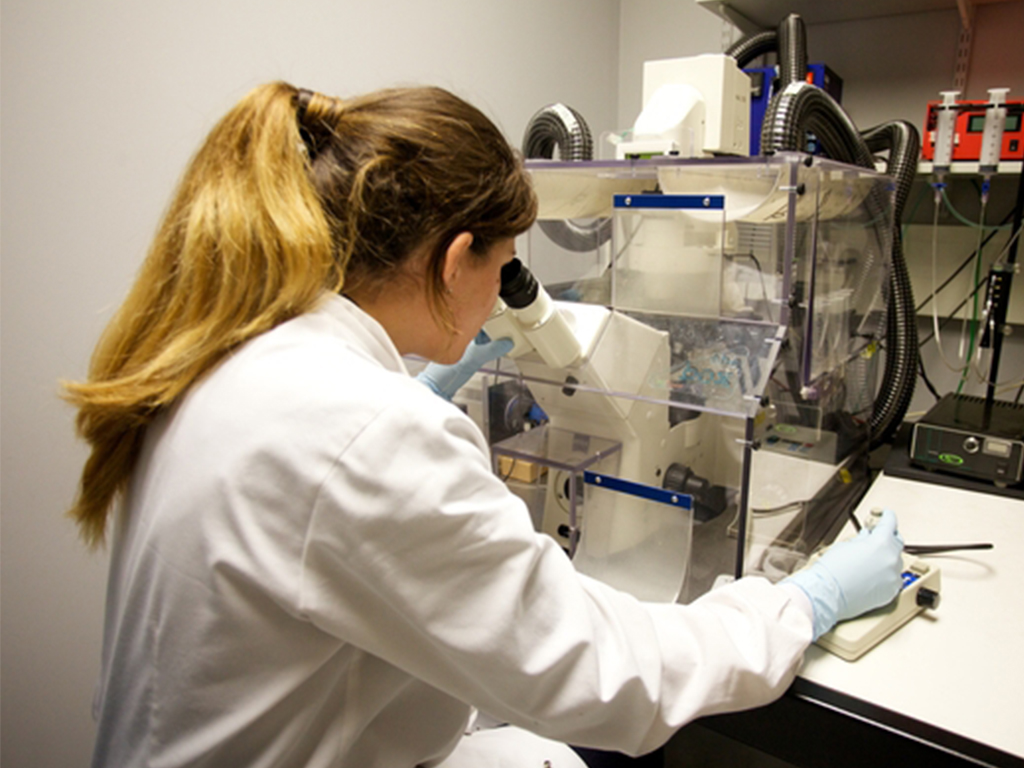It is still not possible to be clear about what causes MND, as different things may trigger the disease for each person.
Select from the following options or search for content by need with our:
Care information finder
I am optimistic there will be a cure one day. It's a challenge for the 21st century and I think science will find a way.
What is thought to cause MND?
Current thinking about what causes MND, indicates that a number of genetic, environmental and lifestyle risk factors need to combine before most forms of MND develop. Together, these risk factors may 'tip the balance' towards someone developing the disease. Finding out which factors are involved and how they combine is helping researchers discover why the disease begins, and the best way to tackle it.
Genetic factors
For most people with MND, certain genes have some impact in causing the disease. However, for up to 1 in 10 people with MND, genes play a larger part in the start of the disease. These cases usually show a family history of MND and you can find out more on our inherited MND page.
Lifestyle and environment
Lifestyle and environmental factors that might assist the development of MND have been studied in depth over the years. These studies have found possible links between MND and:
- mechanical and/or electrical trauma
- military service
- high levels of exercise
- exposure to agricultural chemicals, and
- exposure to a variety of heavy metals.
The evidence gained in these studies has often been conflicting and clear conclusions cannot be given. With these limits, it is not yet possible to provide guidance on how to reduce the risk of developing MND. However, research into these factors is progressing.
What goes wrong in motor neurones?
Different things can damage motor neurones and risk the onset of MND. Some of these are outlined below.
Structure
Motor neurones are nerve cells in our body. All cells have a 'cytoskeleton' within them, which maintains the shape and structure of the cell. If the structure is not held, it could cause the cell to die.
Instructions
Proteins are the body's building blocks that help pass messages from one cell to another. Within cells, there are ‘editors’ that copy, tidy and transport short sections of code, known as RNA, to help build proteins. If this process becomes faulty, the production of proteins could be negatively affected and risk MND.
Clumping
Abnormal clumps (aggregates) of protein molecules (most often the TDP-43 protein) are found inside motor neurones affected by MND. Specifically, they build up in the wrong part of the motor neurone, leading to disruption in the way motor neurones work.
Messages
Electrical messages are sent from one motor neurone to the next by the release of a chemical messenger in the gap between them. For many motor neurones, this messenger is called glutamate, which at high concentrations can be toxic. Riluzole, the only drug licensed in the UK to treat MND, is thought to work by reducing levels of glutamate.
Transport
Motor neurones are large cells, the largest of which can be up to a metre long. It is important that their transport systems work well for moving nutrients, waste and components from one end to the other. When these transport systems break down, the motor neurone cell can no longer work effectively.
Waste
Cells have processes that sometimes produce by-products. 'Oxygen free radicals' are toxic chemicals formed as a normal by-product of our cells. The vitamins and minerals the body uses to mop these radicals up are called 'antioxidants'. Research suggests that in MND, motor neurone antioxidants don't work well, leading to a toxic build-up of waste.
Power
All cells contain tiny 'batteries' called mitochondria, producing energy for the cell and helping to make sure the cell works normally. The mitochondria found in the motor neurones of people with MND appear to be abnormal.
Glial cells
Motor neurones are surrounded by cells called glia, which normally provide the neurones with support and nourishment. However, researchers have now come to realise that glial cells can in fact contribute to the decay of motor neurones. These cells may lose their supportive properties and can even become toxic. An example of a glial cell is an 'astrocyte'.
Nutrients
There is some evidence that motor neurones become more likely to develop MND because of a lack of nutrients. One form of such nutrients is a group of chemicals called 'neurotrophic factors' (meaning ‘nerve nourishing factors’).
How can I find out more about MND research?
Find out more about MND research, including the research we fund and how to get involved, on our research pages.
Tell us your thoughts on this web page
Page last updated: 14 February 2025
Next full review: February 2027
